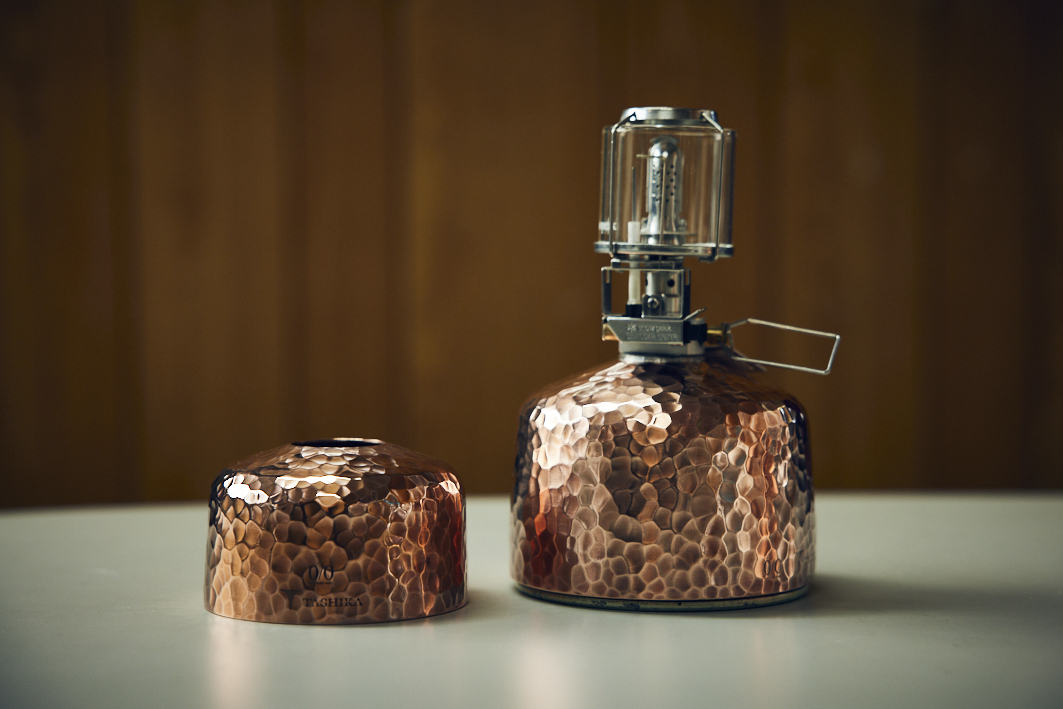Edogawa Craft Stories

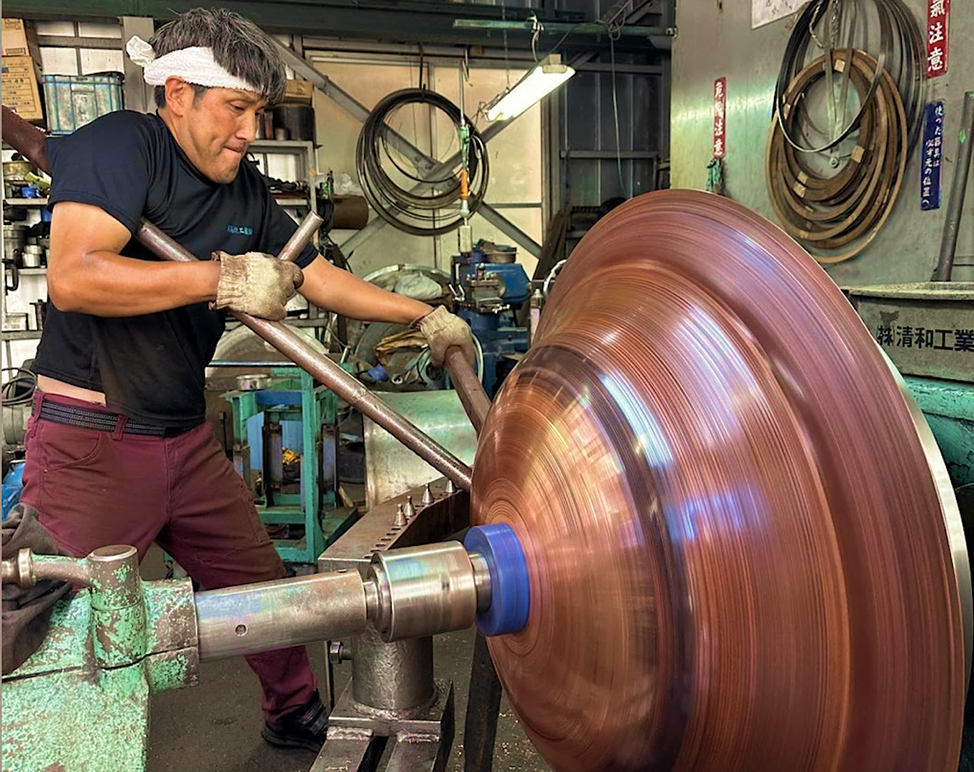
Ideas into Form: Delicate Spun-Metal Craftsmanship by a Team of Skilled Artisans
Metal Spinning: Takahashi Shibori Kogyo
Takahashi Masayasu
A square sheet of metal begins to spin, a blade trims it into a circle, and then a hera rod is pressed against it. In moments, the metal stretches and curves—forming the shape of a parabolic antenna or transforming into a cup-like disc. Witnessing the craft of hera-shibori (metal spinning) for the first time feels like watching a magic trick.
Just a short walk from the nostalgic Hirai Station shopping arcade, Takahashi Shibori Kogyo was founded in 1949. Since then, the company has specialized exclusively in hera-shibori metal processing.
“I knew from a young age that I would take over the business,” says company president Takahashi Masayasu. “In my elementary school yearbook, I even wrote, ‘My dream for the future is to become the third-generation president.’
“Right after graduating high school, I entered a residential driving school to get my regular driver’s license. The very day I got it, I went straight to a metal-spinning company in Ota City and started working there. I lived and trained on-site for five years. After that, I returned to work alongside my father.”
In 2017, at the age of 47, Takahashi succeeded his father as president—fulfilling the dream he had held since childhood. Today, he continues to lead the company’s manufacturing operations together with a team of 15 employees.
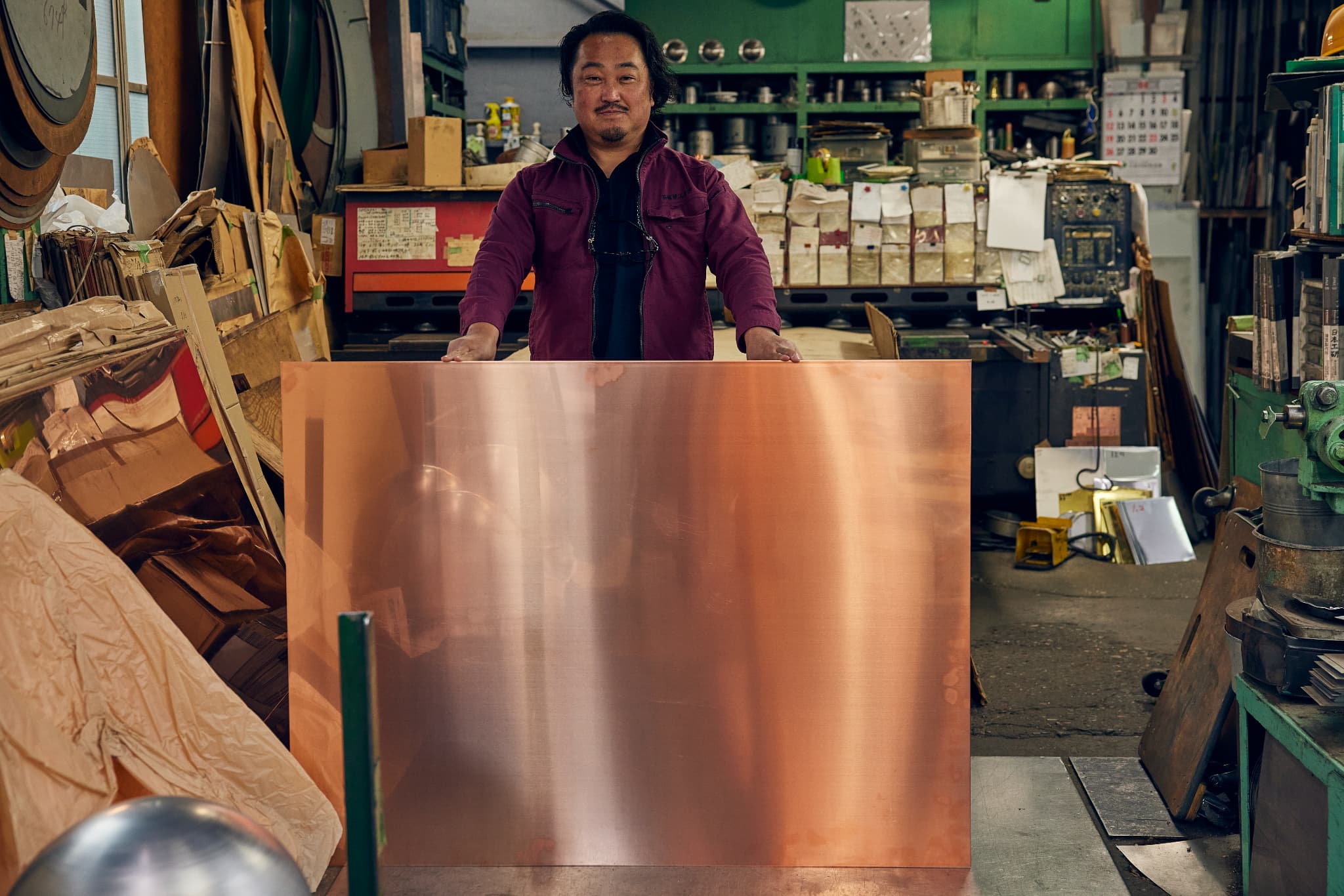
Takahashi holds a sheet of copper, one of the primary raw materials. In his hands, even a heavy slab like this is reshaped in under 30 seconds.
Hera-shibori is a technique in which a metal disc is spun at high speed while a tool known as a hera (or hera rod) is pressed against its surface to shape it. The process can be used to form a wide range of products. The metals handled include stainless steel, aluminum, iron, copper, and titanium, and the sizes and thicknesses vary greatly depending on the item being produced. There are also many different types of hera rods, including convex types and those with metal rollers attached to the tip.
“To finish each item efficiently and beautifully, we make our own hera rods suited to the material properties and the specific shape we’re working with,” explains Takahashi.
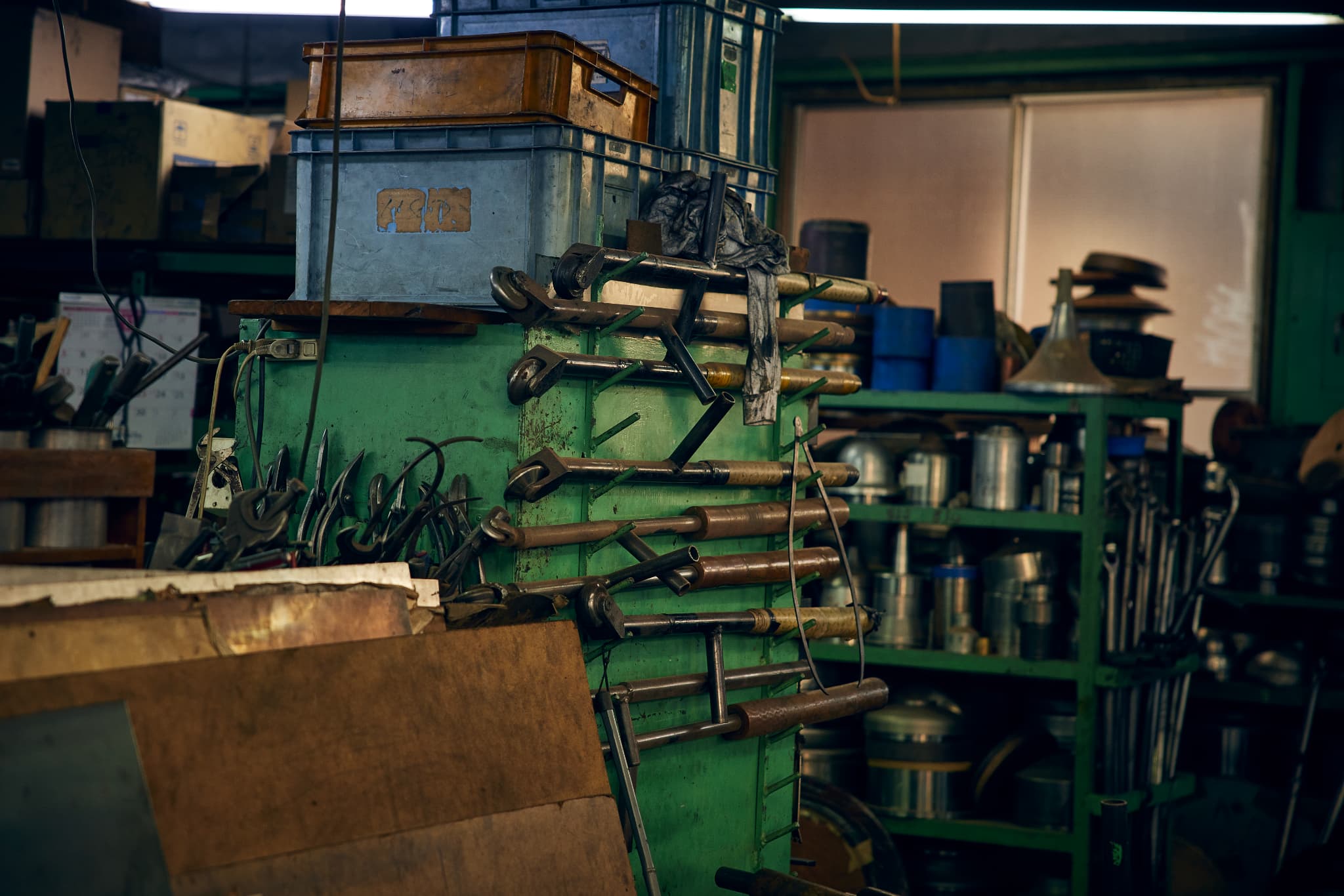
A set of custom hera rods. Artisans deftly switch between rods of various lengths and shapes depending on the task.
Inside the workshop, artisans of various generations are each engaged in their own tasks. Their sturdy physiques are striking.
“When working with high-hardness materials like stainless steel, you really need a lot of strength. Titanium is also hard and doesn’t stretch easily, so we have to apply pressure with our entire bodies. But if you apply too much force, the metal can warp or even tear in an instant. The key is in learning how to adjust pressure—sometimes stronger, sometimes softer, and that just comes from experience. Even when we train younger artisans, all we can really teach is that physical ‘feel.’ The rest, they have to learn through their own bodies.”
Takahashi adds an aside: “That’s why all our workers are so muscular. They don’t need to go to the gym—their daily work is enough training!” Indeed, one can see how the principles of leverage come into play as the craftsmen throw their full body weight into the task—struggling against the metal in a kind of forged battle.
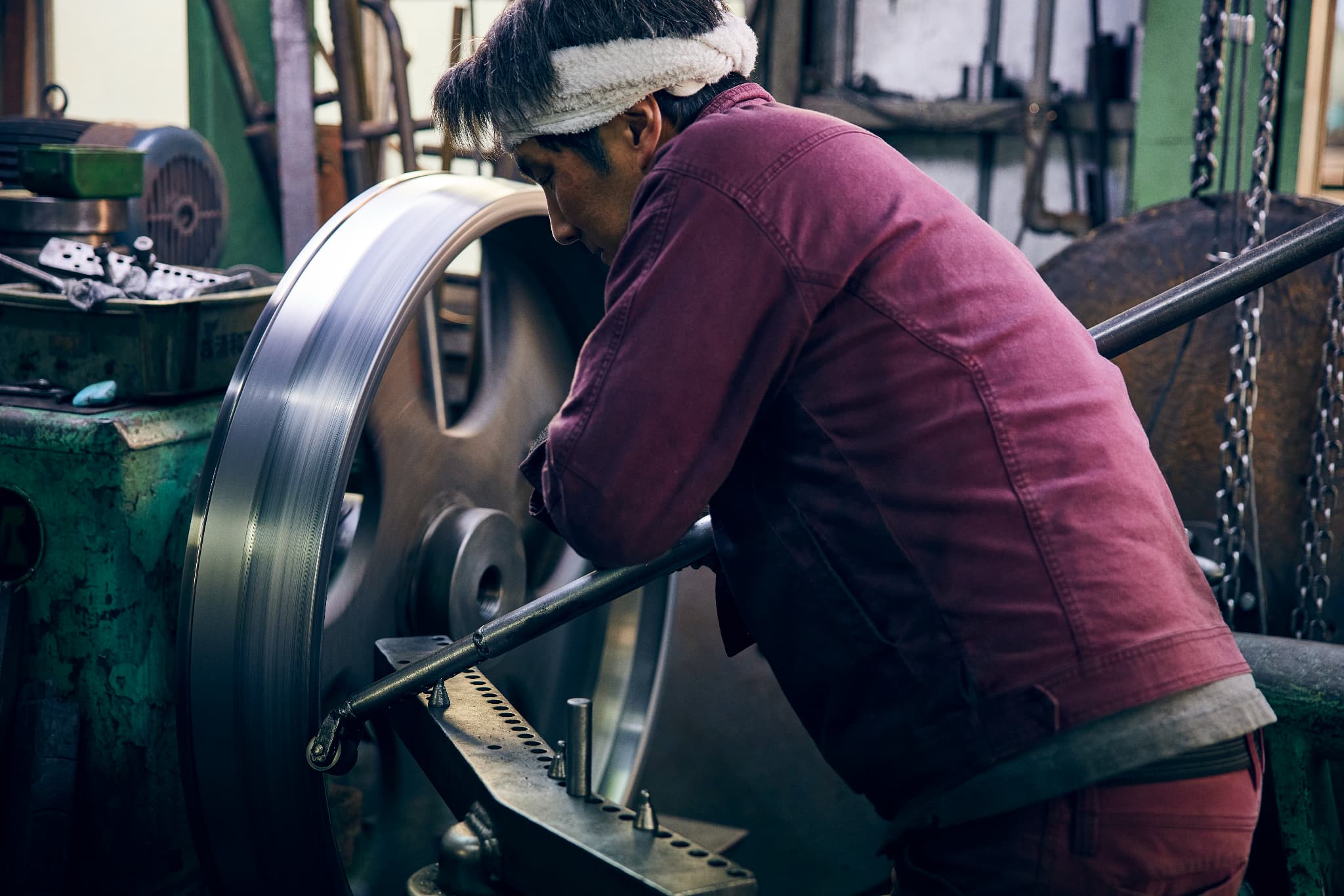
Spinning work on a part for a large clock. These toughened artisans say their daily shaping work doubles as strength training.
The variety of products made at Takahashi’s factory is truly broad, and many are found throughout everyday life. These include the frames of large public clocks seen in schools and parks nationwide, streetlight covers, stage and broadcast lighting equipment, frying pans and various other metal cookware, as well as air vents for airports, hotels, and shopping malls. For temples and shrines, they also produce ornamental finials in various sizes. They are also the only workshop in Japan currently producing timpani drums in both copper and aluminum—a vital part of many orchestra setups. Each of these are things most of us have likely seen at some point.
During our visit, the workshop was in the process of producing stainless steel feeding dishes for the giraffes and zebras at a zoo.
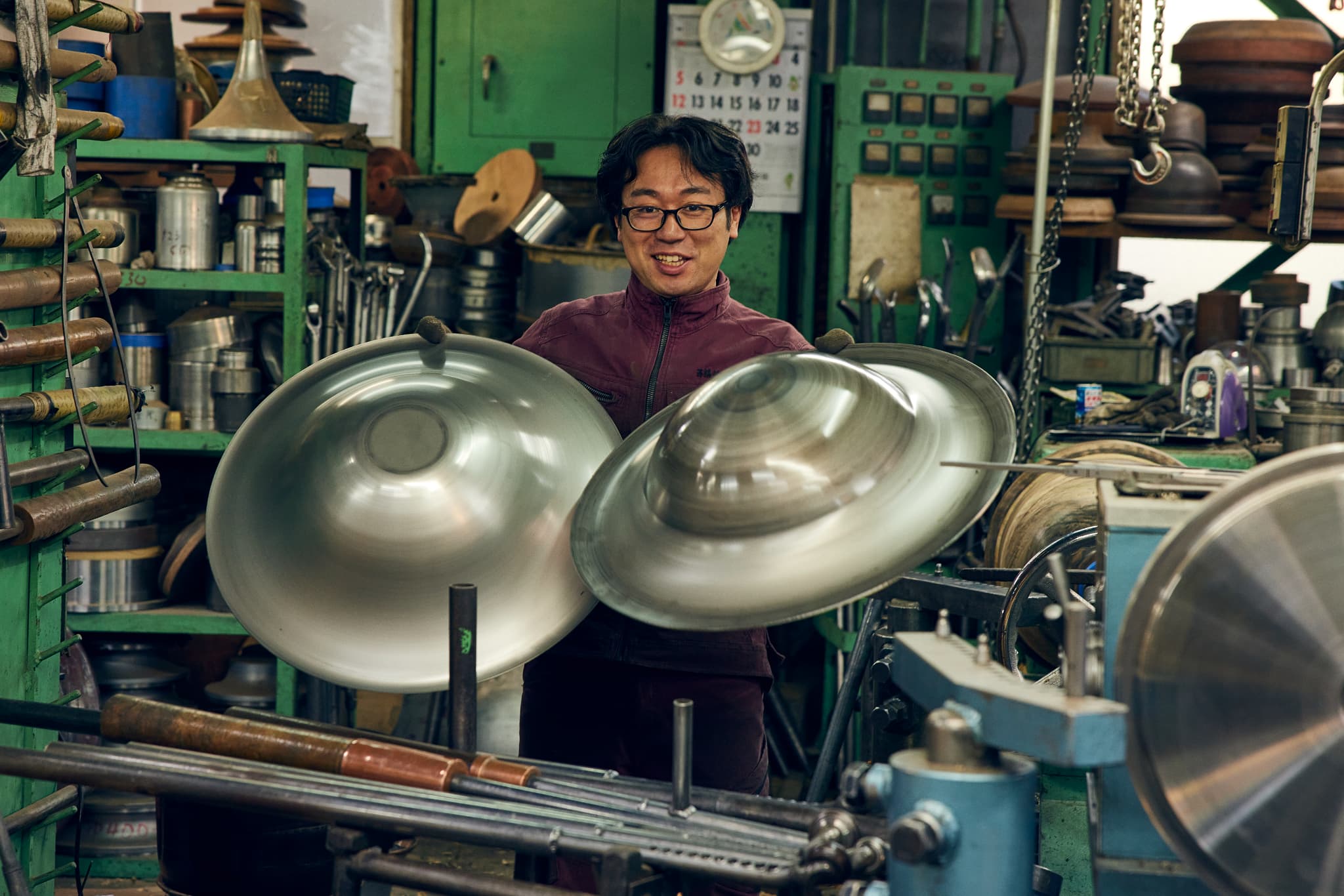
In the process of making feeding bowls for giraffes and zebras. The artisans say they imagine the happy faces of the animals as they eat.
For certain products, once the initial spinning and shaping is done, an additional step is needed to remove internal stresses created during the process. This involves yakinamashi—annealing the metal with fire to soften it—before it’s spun again. In some cases, this heating and reshaping cycle is repeated several times.
“The number of annealing rounds depends on the material and how deep we’re spinning it,” explains Takahashi. “Because of that, some people liken hera-shibori to ‘metal pottery.’ You shape the metal with the pressure of your own hands, and the outcome can vary completely depending on your touch. That’s part of what makes metal spinning so fascinating.”
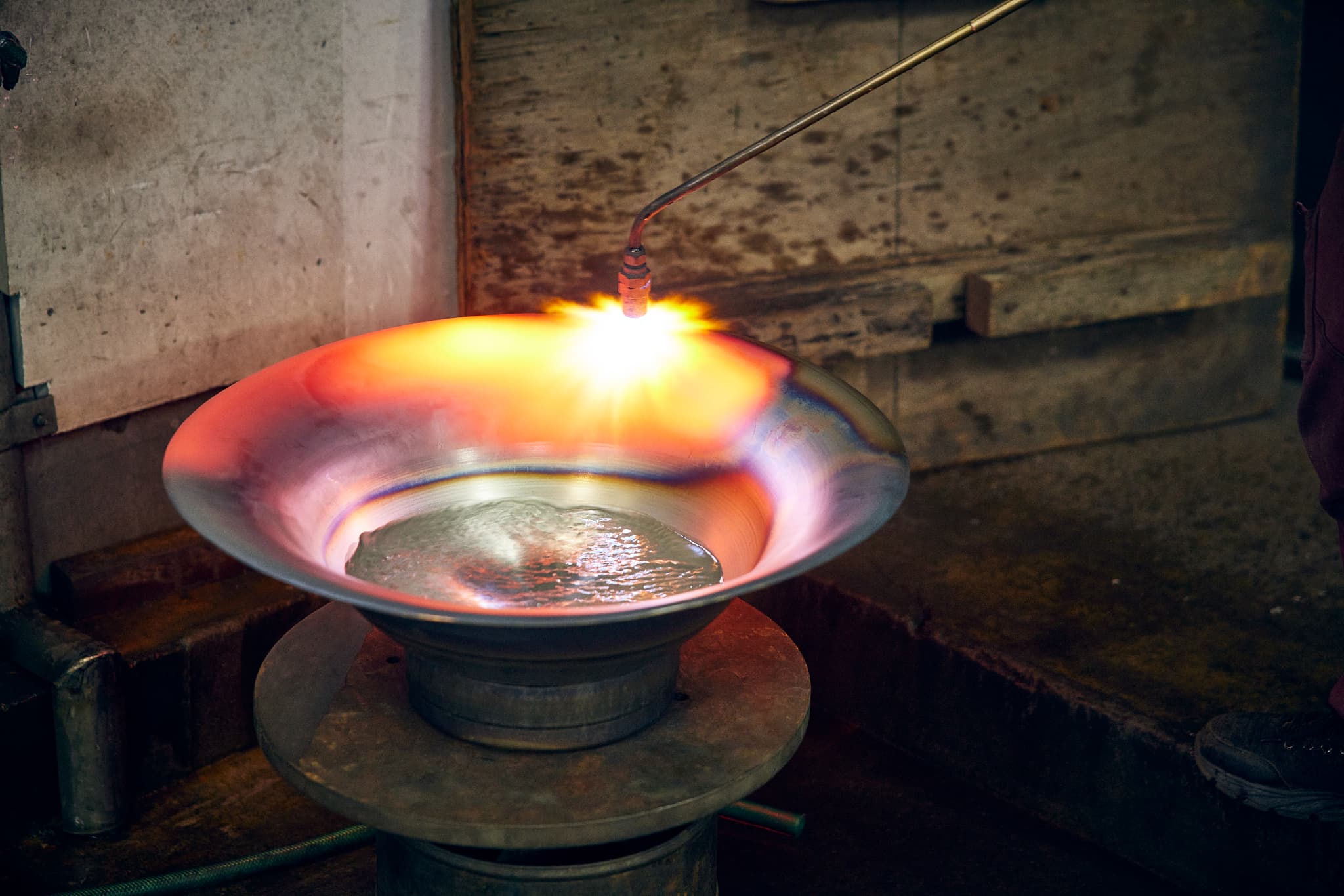
The annealing process (yakinamashi).
“Back in my grandfather’s time, we made things like aluminum dishware, bare-bulb lamp shades, and headlight covers for cars. As society advanced, we pushed ourselves to refine our techniques. Thanks to that legacy and the skills passed down from my grandfather and father, I’ve recently been able to explore new ideas, which has made the work even more exciting.”
In fact, driven by a desire to share the metal-spinning techniques he’s honed over the years with a wider audience, Takahashi launched his own brand, TASHIKA, in 2022. The name combines “Takahashi,” “shibori” (spinning), and the Japanese word for “development”—and also carries the nuance of the word tashika, meaning “reliable” or “authentic” craftsmanship. Everything under the TASHIKA label is handcrafted by Takahashi himself, from design to production. The brand’s lineup includes popular items like gas canister covers and lampshades designed for outdoor use. They often sell out instantly at events, not just online. The collection features striking new takes on spun metal, like copper pieces finished with hammered textures or titanium treated with fire to achieve a deep, vivid blue.
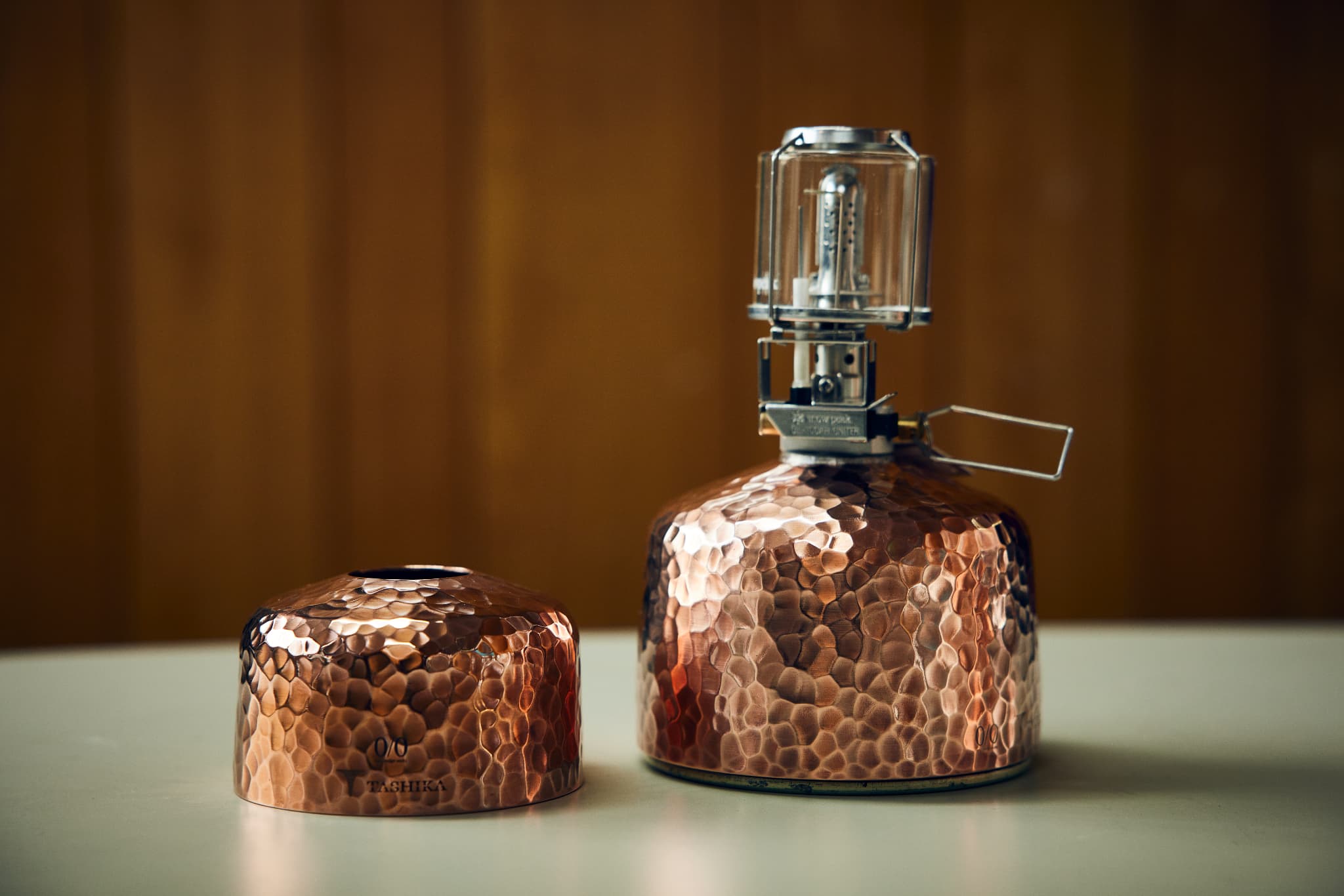
The TASHIKA brand, launched in 2022. It brings metal-spinning craftsmanship into new territory, with a focus on camping gear.
“Take stainless steel, for example: sandblasting it after spinning can make it look like a completely different material. Post-processing allows for all sorts of creative expression. These days, I have more and more ideas I want to bring to life.”
Takahashi’s vibrant energy seems to flow directly into the factory, infusing it with new momentum. With the addition of new “weapons” in their equipment armory, even more innovation seems to be on the horizon.
“There’s something truly special about seeing something you made go out into the world and bring a smile to someone’s face. That’s the joy of making things. I want my staff to pitch in with ideas too, so we can all take on challenges together and see how the world responds to our work. Our factory has a great atmosphere right now,” he says, laughing. “We’ve even secured a subsidy to purchase a new fiber laser cutter next year. So please look forward to an even more powerful, upgraded version of us!”
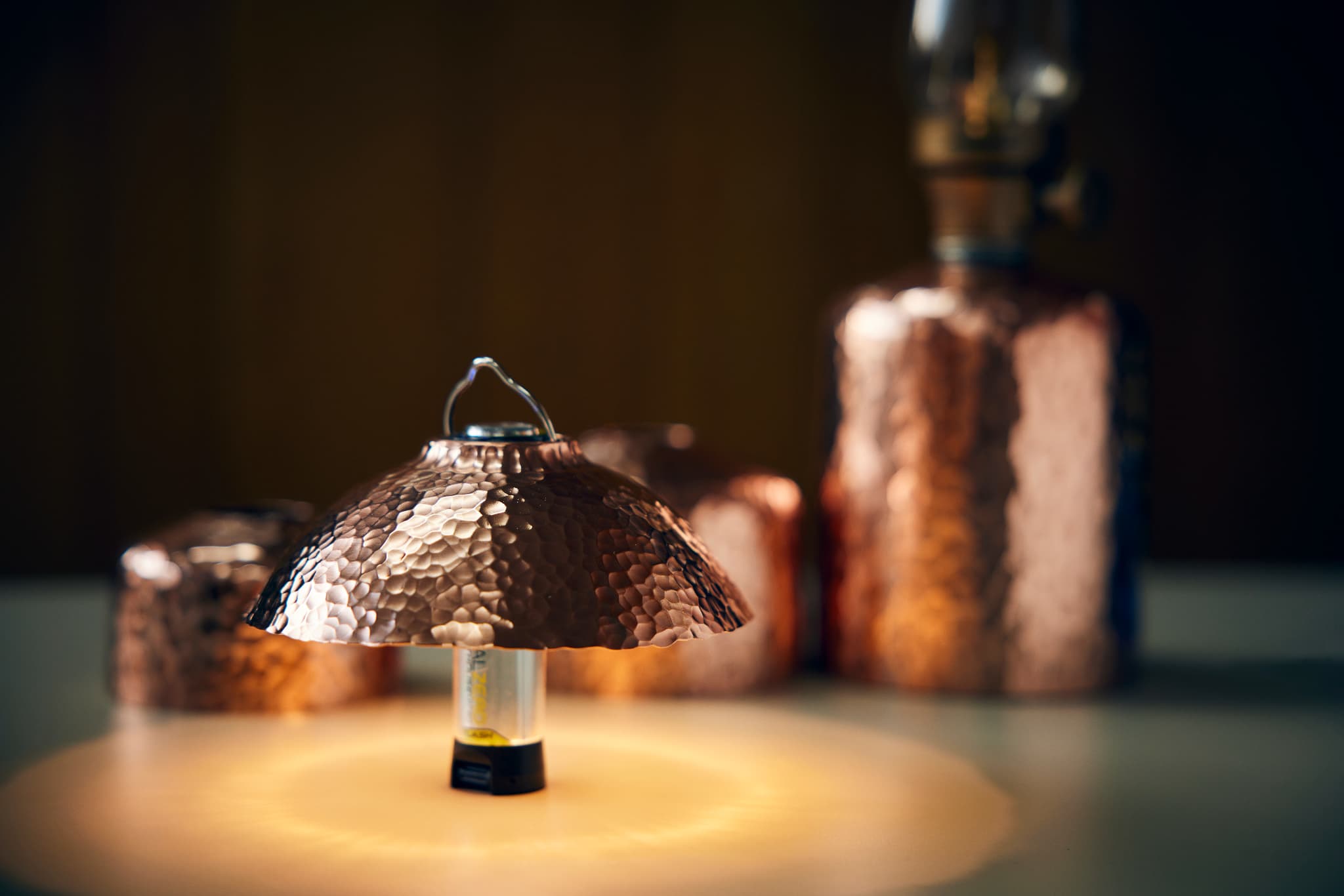
LAMP SHADE for goal zero – copper: hammered finish. Each hammered mark is made by hand. The warm, inviting glow of the copper adds ambiance to any camping scene.
Photos: Honna Yuka
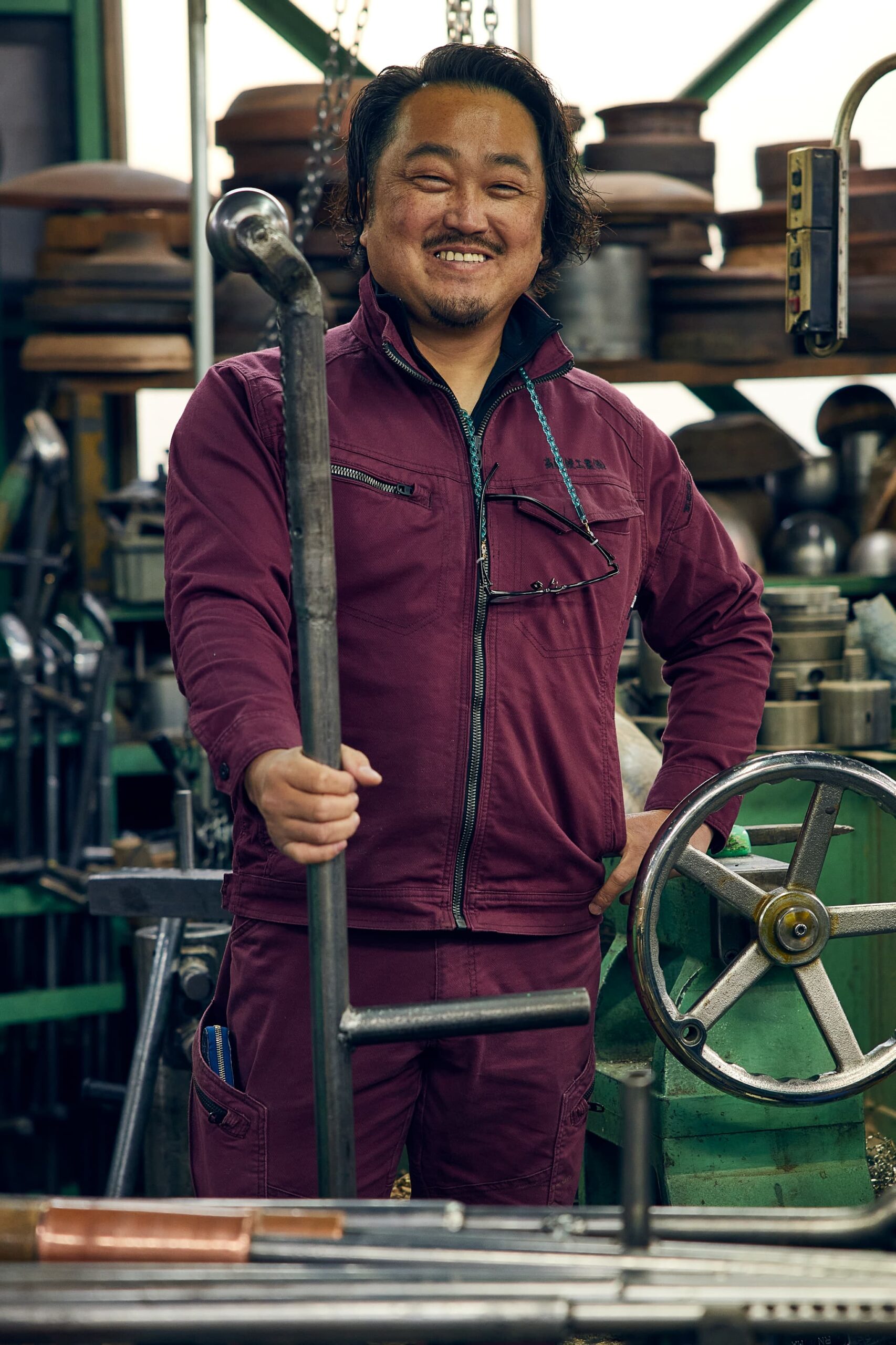
Introduction of the Artisan
Incorporated in 1954, Takahashi Shibori Kogyo uses metal-spinning techniques to produce a variety of everyday items, including lighting fixtures, clocks, musical instruments, and finials for temples and shrines. In 2022, the company launched its original brand TASHIKA, which focuses on innovative camping gear and related products.
・Takahashi Shibori Kogyo
・2-9-16 Hirai, Edogawa-ku, Tokyo
